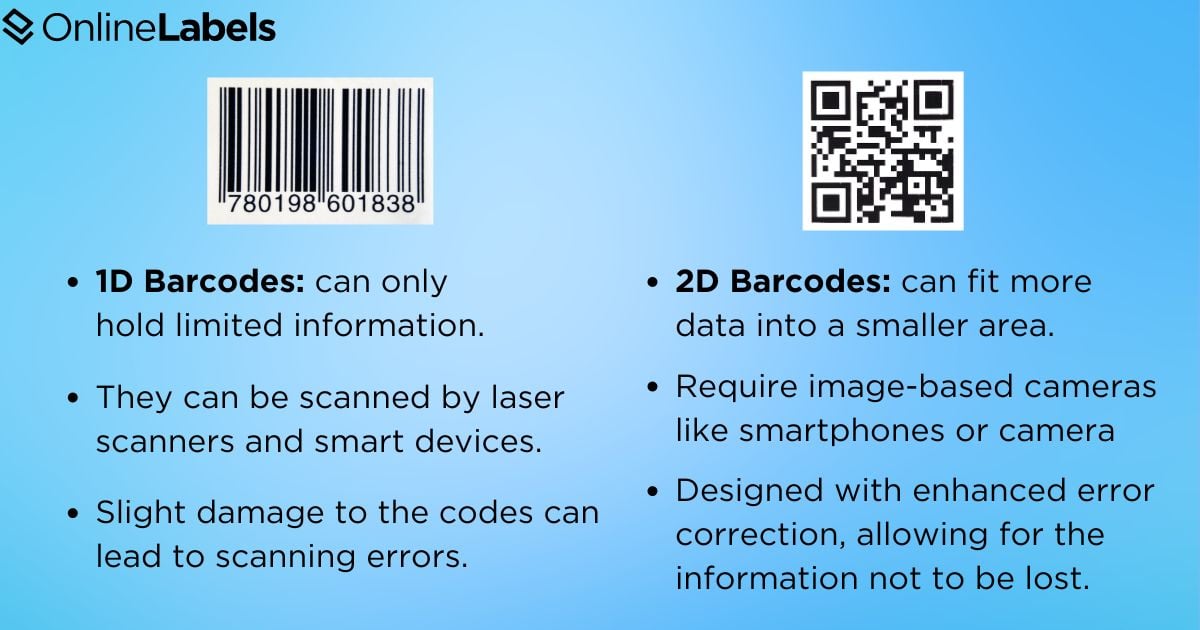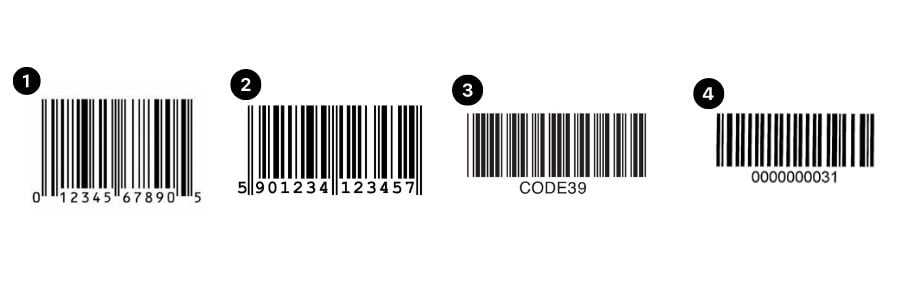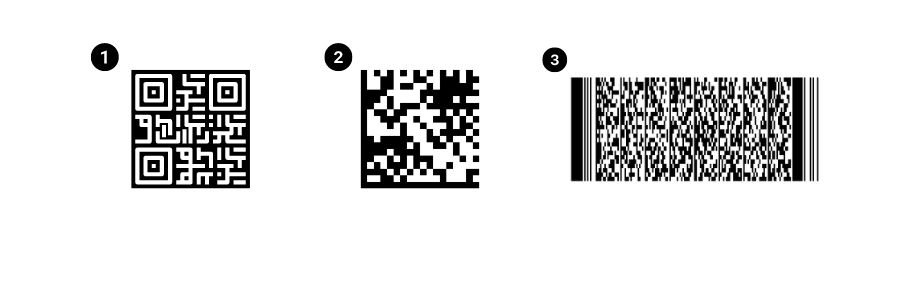Comparing 1D and 2D Barcodes: Which One is Better for Your Products?

Barcode labels play an essential role in transmitting information about an item. These linear identifiers have been familiar for decades, from finding them in grocery store checkout counters to high-tech manufacturing plants. In this article, we'll explore the two standard types of barcodes (1D and 2D) and examine how they are utilized across various industries.
What are Barcodes?

A barcode is a visual, machine-readable representation of data. It consists of parallel lines (1D barcodes) or patterns of squares (2D barcodes) that encode information such as product numbers or other identifiers. Both barcodes are used extensively in retail, food labeling, manufacturing, etc., primarily to track products, provide information, and manage inventory for quick and accurate data retrieval and reading.
Common Types of 1D Barcodes

Linear barcodes, or 1D barcodes, are the most traditional and widely recognized form of barcoding. They consist of a series of vertical parallel lines that can be scanned and read by a barcode scanner.
Several types of 1D barcodes are commonly used across different industries and can be used in various categories:
- UPC (Universal Product Code): this type of barcode label is used in retail to scan at point-of-sale terminals.
- EAN (European Article Number): similar to UPC but used internationally, particularly in Europe.
- Code 39: used in various industries for its ability to code numbers and letters and is used in inventory and industrial applications.
- Code 128: known for its high data density and versatility, often used in logistics and shipping and start with eight zeros.
Where are 1D Barcodes used?
1D barcodes are employed across various industries due to their simplicity and effectiveness. Some of the sectors where they are applied the most include:
- Retail: UPC and EAN barcodes are essential tools in retail shops, especially for product identification and price scanning at checkout.
- Inventory management: Code 39 and Code 128 barcodes help businesses track stock levels and manage warehouse operations.
- Manufacturing: Code 128 and Code 39 can also assist in tracking parts and components throughout the manufacturing process, guaranteeing quality control and efficient workflow.
Advantages and Disadvantages of 1D Barcodes
1D Barcodes offer a range of advantages and disadvantages, making them an important feature in various types of businesses.
Advantages of Using 1D Barcodes
- Simple and easy to use: 1D barcodes are straightforward to implement. This is useful for simple information, such as during inventory or pricing.
- Wide adoption and compatibility: this type of barcode is universally recognized and compatible with various barcode scanners, smartphone cameras, and systems.
- Adequate for simple data: for applications that require basic information, such as product identification and pricing, 1D barcodes are perfect and provide the right amount of information.
Disadvantages of Using 1D Barcodes
- Limited linking capabilities: 1D barcodes have a restricted data capacity. They can only store a small amount of information. There's limited access to information, and they can't open images or websites.
- Limited data storage: these barcodes cannot contain large files of information. They are perfect for storing a product's name; however, they can’t hold operating systems or websites
- Easily damaged: slight scuffs or markings on these codes can lead to scanning errors.
Common Types of 2D Barcodes

Matrix barcodes, or 2D barcodes, are known for having more advanced barcode technology. In contrast with 1D barcodes, which store limited data, 2D barcodes use more patterns of squares and dots, which allows them to hold more information, such as links, data, website links, and menus.
Several types of 2D barcodes are widely used across various industries:
- Quick response code (QR Code): one of the most recognizable 2D barcodes, QR codes can store multiple data types, including URLs, text, and contact information. They are commonly used in marketing, ticketing, and mobile app links.
- Data matrix: known for its compact size, this barcode type is often used in manufacturing and logistics to track small parts and components.
- PDF417: this type of 2D barcode holds large amounts of data and is perfect for specific applications such as transportation, inventory management, and identification.
Where are 2D Barcodes used?
2D barcodes are versatile and user-friendly, making them easy to use across various industries. Here are some key sectors where these types of labels can be used:
- Marketing and advertising: QR codes can transmit important information, including links and social media pages, during a marketing campaign.
- Food businesses: this type of barcode can be used to open a virtual menu in restaurants or provide access to nutritional information about a specific dish.
- Education and hospitality information: 2D barcodes provide access to digital learning resources and access to supplemental materials.
Advantages and Disadvantages of 2D Barcodes
2D Barcodes have advantages and disadvantages when applied in business.
Advantages of Using 2D Barcodes:
- High data capacity: 2D barcodes can store significantly more information than 1D. This capacity allows them to encode complex and detailed information such as URLs, contact details, etc.
- Interactive marketing capability: this type of barcode is widely used to engage consumers. It can provide an interactive experience that enhances customer engagement and increases interaction with the company’s social channels, offers, etc.
- Easier readability: 2D barcodes can be easily scanned with a smartphone or a tablet, even from a distance or any particular angle. This can improve operational efficiency in checkouts, inventory management, and logistics.
Disadvantages of Using 2D Barcodes
- Higher installment costs: the initial costs associated with implementing 2D barcode systems can be higher due to the amount of information they hold. Additionally, if the link to the website changes, the 2D barcode would need additional assistance.
- Potential overload of information: 2D barcodes have a high data capacity, but there’s a risk of overloading them with too much information, which can complicate data management and accessibility.
- Compatibility issues: 2D barcodes are not compatible with old systems. For this reason, they may need additional upgrades or integrations for fluent operations.
OL Free QR Code Generator
At OnlineLabels, we offer a tool that helps create free 2D Barcodes. Users can choose between six categories of information to include like contact information, phone number, plain text, email address, SMS, and URL. The tool is accessible online throughout our site, and it offers a range of customization options for sizing and allows for free download.

Our system facilitates easier accessibility for quicker QR coding generation, enabling faster printers.
Exploring the Benefits of 1D and 2D Barcodes in Business
Barcode labels are essential tools for transmitting information and ensuring customer satisfaction across various industries. From grocery stores to manufacturing systems, 1D and 2D barcodes are highly recommended for presenting exciting concepts to the market, which can include menus social media channels, among others. With advanced tools like our QR code generator, businesses can easily create customized 2D barcodes to meet their needs. For more information on how to use QR codes on labels and stickers, check out this guide.



